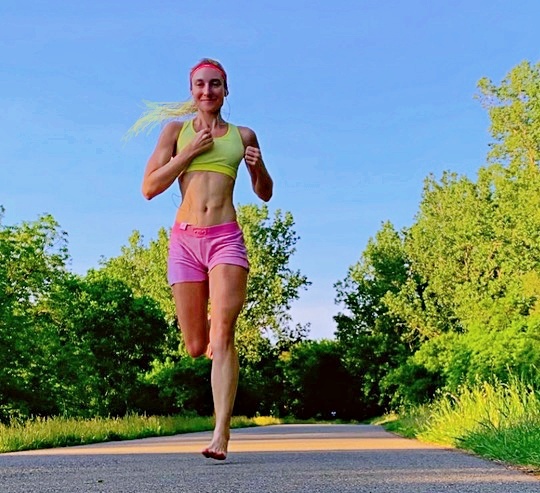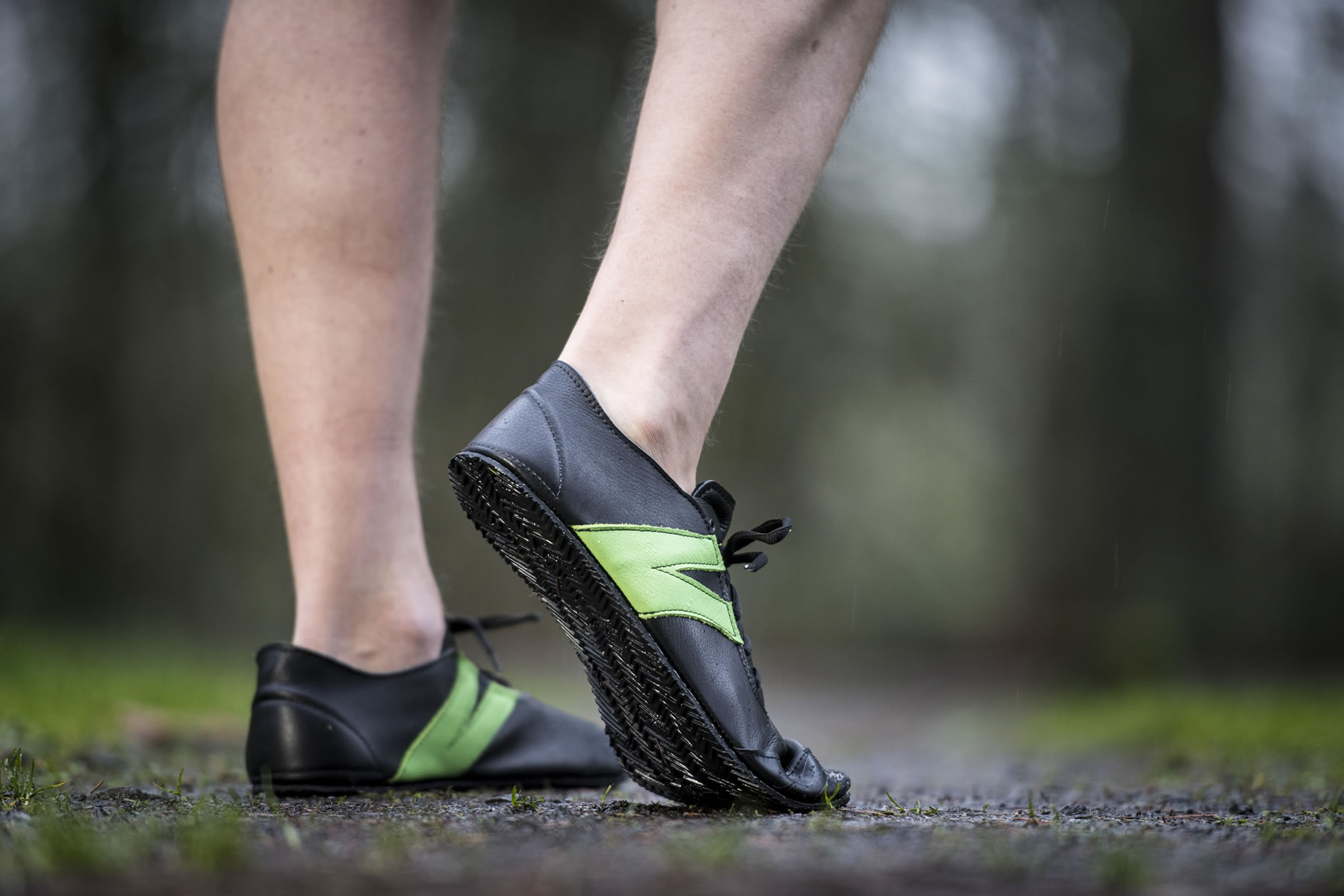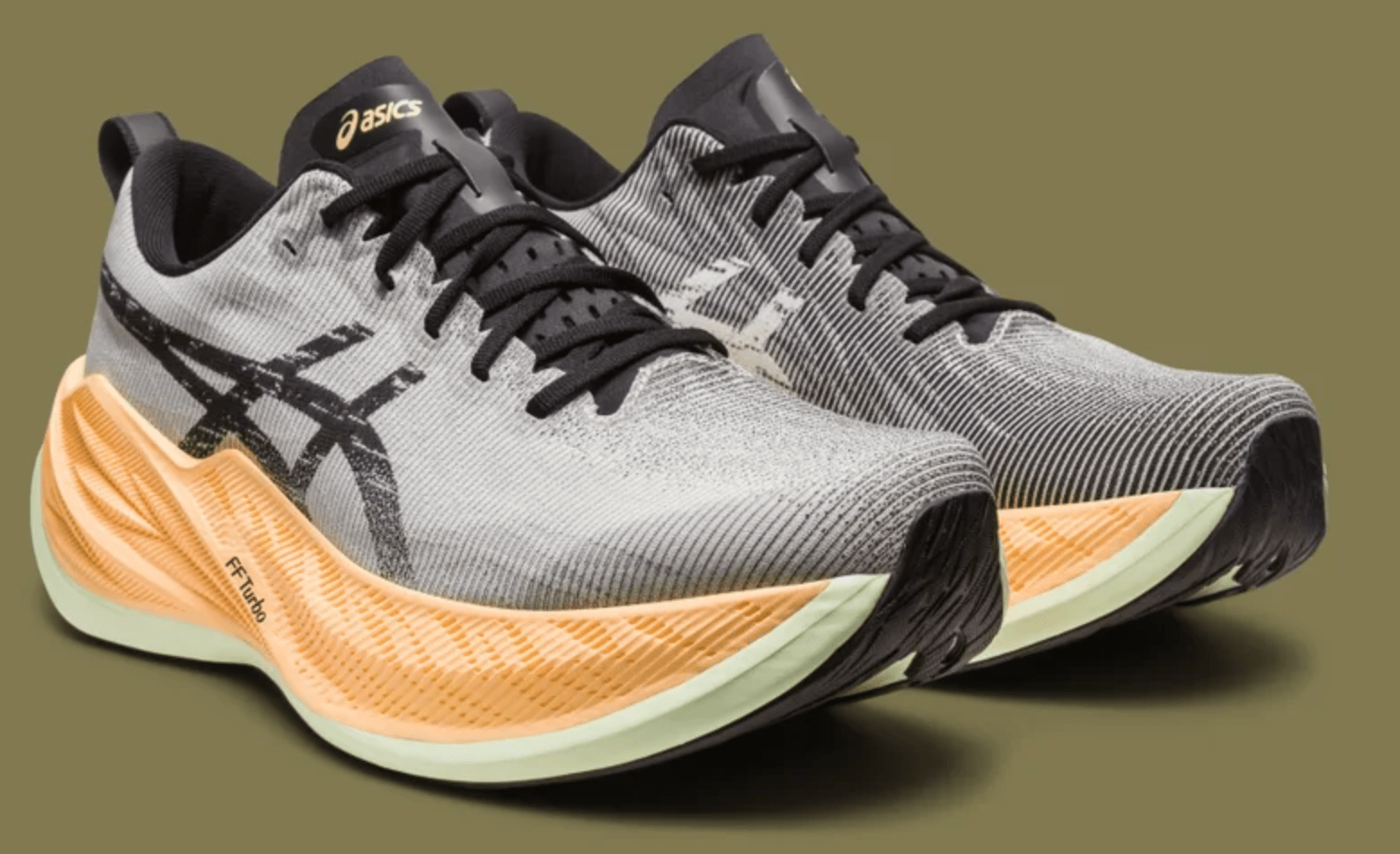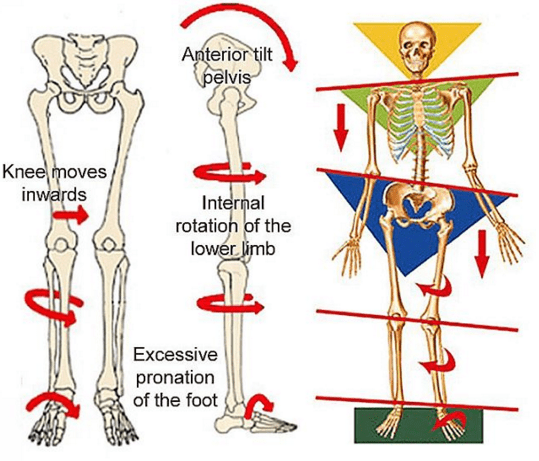The most common cause of hip injuries in running is excessive hip adduction and hip internal rotation at touchdown and during the early phases of stance. This means the thigh and knee points too far inward when the foot is interacting with the ground during running, and thick cushioned running shoes is the main cause of this.
On the research side, its turned out to be very much confirmed that cushioned running shoes do not reduce injury. In fact, these shoes have been consistently found to be directly involved in making foot step stability less secure and less safe by forcing the feet into extreme, over-straining positions, also known as overpronation (shown below).
The reason overpronation is injurious on the hips is because the excessive motions of the foot transfers more rotational and torsional stress up the leg and through the hips. This is also why conventional running shoes aren’t playing the role they are marketed to play in preventing injuries since its well confirmed that the thicker the underfoot cushioning, the more the foot pronates out of tolerance. Its for this reason that some studies have even labeled cushioned running shoes as a ‘mechanical interference’ since the foot is less capable of maintaining postural stability as compared with running barefoot.

Why Barefoot Running is Better for Your Hips
There’s overwhelming evidence that you have the most maximum level of footstep stability when you’re barefoot. This is because for one, there’s no mechanical interference under the foot to push foot pronation away from the natural order.
For another, running barefoot naturally supplies a wide variety of sensory stimuli that directly engages safer mechanics proven to be significantly more protective on the hips than cushioned running shoes. One example of this was published in the journal of Medicine and Science in Sports and Exercise showed:
- Habitual shod heel strike runners who ran barefoot instantly adopted a forefoot strike and showed significant reductions in hip adduction and hip internal rotation at initial contact.
- Hip adduction and hip internal rotation remained significantly lower during stance in the barefoot running group than the shod running group.
Similar research in the journal PMR also found that barefoot runners had a 54% decrease in hip internal rotation torque than shod runners!
Despite being a multi-billion dollar industry with unlimited research/tech resources behind it, the running shoe industry still cannot produce better results in preventing mechanical defections than running barefoot! To date, there’s enough data confirming that when you run barefoot, your instinct is to always land lighter with a forefoot strike whereas the thicker the under-foot cushioning, the farther your mechanics go in the wrong direction (i.e. heel stiking, overpronation, over-striding, etc).
Likewise, when it comes to research on impact mechanics, it reveals that the corrective effects are fast-acting when you run barefoot, and these positive engagements remain constant when you are running barefoot. This is never the case with thickly cushioned running shoes, and it’s also why barefoot running continues to be relevant and effective in injury prevention since the real potential to run with optimal form is in your ground feel!
The evidence has become so compelling that barefoot running does more than just protect the hips from injury, it also does a better job at safeguarding the knees from high impact than thickly cushioned running shoes. Here’s the research on that!
I hope you’ve enjoyed my article! To stay more informed on the health and performance benefits of barefoot running, I also have a YouTube channel: Run Forefoot where I also discuss the latest research regarding the hot-button debate, forefoot strike vs heel strike running!
References:
Kerrigan et al. The effect of running shoes on lower extremity joint works. PMR. 2009; 1(12):1058-64.
McCarthy et al. Barefoot running and hip kinematics: good news for Knee? Med Sci Sport Exerc, 2010. DOI:10.1249.

Bretta Riches
BSc Neurobiology; MSc Biomechanics candidate, ultra minimalist runner & founder of RunForefoot. I was a heel striker, always injured. I was inspired by the great Tirunesh Dibaba to try forefoot running. Now, I'm injury free. This is why I launched Run Forefoot, to advocate the health & performance benefits of forefoot running and to raise awareness on the dangers of heel striking, because the world needs to know.
Latest posts by Bretta Riches (see all)
- Does Foot Strike Really Matter in Running? YES! - 17/04/2024
- Heel Lifts Increase Injury in Runners - 16/04/2024
- Are Minimalist Shoes Good for Seniors? YES! - 14/04/2024



